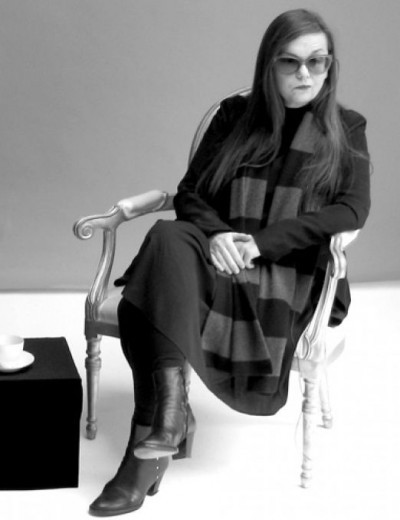
Martine Sitbon
About
Born in Casablanca in 1951, Martine Sitbon discovered Paris during adolescence. She dreamt of theatre and ballet costumes . While studying in school Berçot, she learned with enthusiasm stylisme methods. Armed with her diploma in 1974, Martine Sitbon set out to conquer the world. From New York to Hong- Kong, from India to Milan, she tested her talent as a fashion designer while collaborating with many companies in the ready-to-wear industry. Her ten years experience taught her all the steps of a successful collection and back in Paris in 1985, Martine Sitbon launched her own label.
In 1997 she showed her fist fashion show in Japan during Tokyo Fashion Week.
The same year she was appointed Creative Director at Chloé, the collaboration continues for nine seasons.
In 1989 she held her second fashion show in Osaka, Japan.
In 1990 she opened her first freestanding Martine Sitbon shop. The boutique is located at 13 rue de Grenelle in the 7th arrondissement in Paris with a surface of 200 m2.
In 1997 she opened her new showroom at 6 rue de Braque in the 3rd Arrondissement (Marais) Paris.
Sitbon's duality has made her an important force in fashion, with a successful record of collections, including a new menswear line in 1999. Fashioned after Brit rockers, the suits and separates had hints of feminity, just as her womenswear usually had underlying masculinity.
2000 she launched the first watch collection in collaboration with Citizen.
In 2001 she opened a Martine Sitbon boutique in Seoul, South Korea, followed by two further shop-in-shops (women and men) at Galeries Lafayette and Boulevard Haussmann in Paris in 2002.
A new collaboration arrived in the 21st century when Sitbon signed with Byblos to become its womenswear director in 2001. The appointment came at a time when Sitbon's own collections were increasingly well received. Her spring 2002 womenswear showing in Paris was another stunner with delicate shirts and camisoles, cinched dresses, and wide trousers for day, and eveningwear in darker shades of gold, coral, and black with elaborate beading and embroidery.
In 2003 she held her last runway show of the house Martine Sitbon. Autum/Winter 2004-2005 season at the Musée D’Art modern de la ville de Paris (Museum of Modern Art, Paris).
In 2004 Jimmy K.W. Chan created Rue du Mail. He took Martine Sitbon as Creative Director. The company was established at 5 rue du Mail in the 2nd Arrondissement in Paris.
In 2006 the space Rue du Mail opened.
In 2007 Marine Sitbon held her first Fashion show for Rue du Mail at the Couvent des Cordeliers during the Autumn/Winter 2007 – 2008 ready-to-wear shows in Paris.
The Look
Although her early collections bore fairytale titles like Cinderella, it is rock music, especially of the 1970s, that has often been Sitbon's strongest inspiration. Her sculptural suiting, often based on masculine lines, underpins each season's looks but leathers, studs, and swirling sequins were present, emphasizing both her affinity with the music scene and her skilled use of luxury fabrics. Sitbon's manipulation of delicate textiles, mixing soft pastel and metallic shades as artistically as fruitier colors. Her use of fine organzas, left to flow and ruffle in petal-like folds at the cuff and collars of blouses, was a recurring element in her work. The freedom to use these sensuous fabrics comes from her strong Italian financial backing, enabling her to experiment with expensive 1970s decorative favorites like sequins and embroidery. In 1989 she punctuated cropped leather waistcoats with gold studs, manipulating Hell's Angel motifs to achieve more luxurious results. The idea was developed further in olive suede waistcoats with looped chains that hung down to the bright gold velvet skirts with which they were teamed, demonstrating the subtle use of color and shade pervading her work. In the middle 1990s, Sitbon's rock preoccupations came into their own, in tune with retrospective trends that gave an edge to her signature use of flares and bell bottoms. She has shown them in everything from intricate pink and charcoal cut velvet to dazzling gold sequins. Sitbon's work has always been carefully accessorized, with perspex-heeled platform sandals with black straps criss-crossing up the leg or with stringy leather or satin chokers. Her attention to detail inspires the trimmings she uses; a futuristic bent is also a recurring undercurrent with stretch fit leggings, tops and jackets in soft leather, stitched in circles and stripes, which emphasize the wearer's physique and give a starkly postmodern feel. A sculptural form continues in her suits, tailored to accentuate the shape of the body, like the soft Prince of Wales trouser suits in 1987 that exploited the cut of men's suits and, more severely, in fitted black jackets and miniskirts defined by white borders and flap pocket edges in 1990. Along with the simple raw silk trousers and supple blouses, they provided a classic foil to her more dandyish designs for Chloé and the more fantastic elements of her main line. This ability to design strong daywear items as well as more luxurious garments has provided Sitbon with a wide customer base in Europe. She has skillfully manipulated fabrics and the mixing of very contemporary themes, masculine and feminine.
Who Wears It
Cate Blanchett, Amira Casar, Zoe Cassavetes, Sofia Coppola, Lou Doillon, Kristen Dunst, Scarlett Johansson, Kate Moss, Anita Pallenberg, Vanessa Paradis, Clémence Poésy, Tilda Swinton,